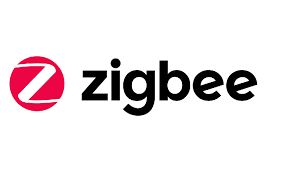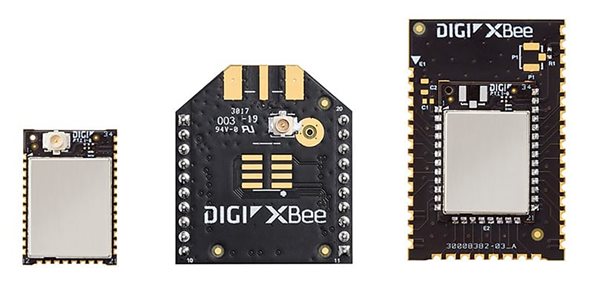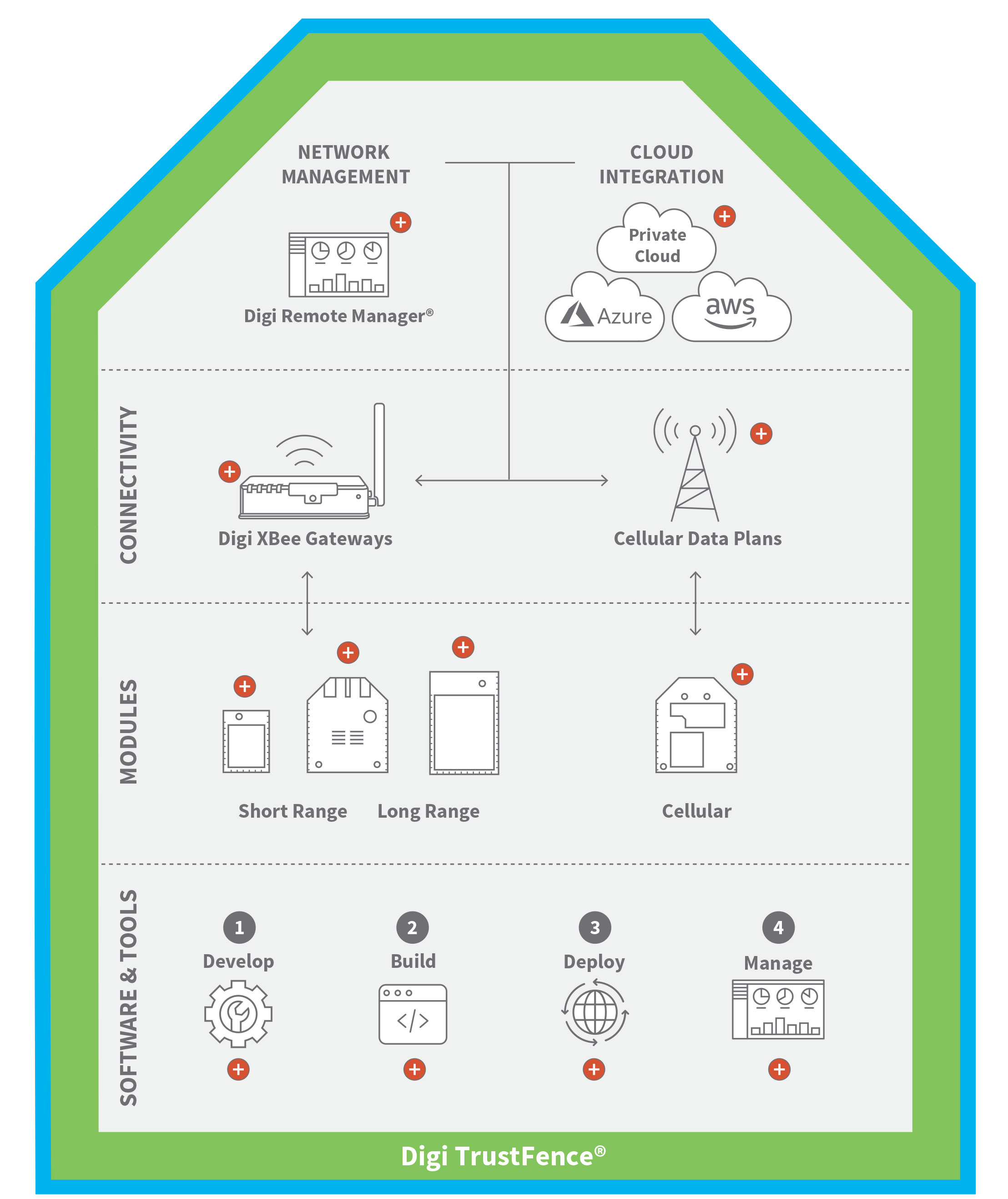XBee® 和 Zigbee® 有一些共同点和关系。XBee 是一个无线电模块系列,是 Digi International 的注册商标。Zigbee 是一种无线通信协议,是 Zigbee 联盟的注册商标。许多人将这两个名称混淆,因为它们都涉及无线电网络,而且品牌中都有 "Bee"。但其实它们是完全不同的。让我们比较一下 XBee 和 Zigbee,以便更好地了解它们是什么、有什么不同以及它们之间的关系。
Zigbee 是一种基于标准的无线通信协议,适用于低功耗、具有现代安全性的局域无线网状网络,可在全球频率上运行。它通常用于家庭自动化、智能能源、无线传感和工业自动化。
XBee Digi XBee 无线电模块具有共同的外形尺寸、标准主机接口、支持工具和软件,以及一组可供选择的协议,包括 Wi-Fi、LTE 蜂窝协议、
DigiMesh以及
Zigbee.因此,有一些 XBee 模块在运行 Zigbee 协议,但并非每个 XBee 都是 Zigbee,反之亦然。
Zigbee 概述
 "(《世界人权宣言》) Zigbee 协议 是一种标准,就像蓝牙是一种标准一样。任何制造商生产的完全支持 Zigbee 的设备都可以与任何其他公司的 Zigbee 设备进行通信。因此,就像苹果公司生产的 Beats 蓝牙耳机可以连接三星公司生产的 Galaxy 智能手机一样,G.E. 公司生产的任何 Zigbee 灯具开关都可以与飞利浦公司生产的 Zigbee 灯具或任何其他 Zigbee 认证设备进行通信。
"(《世界人权宣言》) Zigbee 协议 是一种标准,就像蓝牙是一种标准一样。任何制造商生产的完全支持 Zigbee 的设备都可以与任何其他公司的 Zigbee 设备进行通信。因此,就像苹果公司生产的 Beats 蓝牙耳机可以连接三星公司生产的 Galaxy 智能手机一样,G.E. 公司生产的任何 Zigbee 灯具开关都可以与飞利浦公司生产的 Zigbee 灯具或任何其他 Zigbee 认证设备进行通信。
这是如何实现的?就像一块美味的蛋糕一样,强大的网络协议也是围绕以下几点展开的 层数.每一层增加的特性和功能都有足够的独立性,因此改变一层的实现方式不需要改变其他任何一层。Zigbee 是一个协议层,它定义了无线网络的内容,如如何启动网络、执行地址解析和路由数据包。它还规定了如何实现某些应用,以及预定义的通信方式,如照明控制、智能能源系统管理或环境监测。
支持 Zigbee 高级功能的下层称为 IEEE 802.15.4。这是一套定义如何利用无线电频谱以及促进可靠传输的许多其他操作的标准。Digi 的 XBee 品牌无线电模块可配置或不配置 Zigbee。甚至还有一种配置可直接支持 802.15.4 的原生形式。
Zigbee 本身增加了三个重要功能:
- 网状路由- 使用路由表定义一台无线电如何通过 一系列其他无线电将信息传递到最终目的地。
- 创建特设网络 --这是一个自动流程,可在无需人工干预的情况下即时创建整个无线电网络。
- 自愈网状网 --如果网络中缺少一个或多个无线电设备,该程序会自动计算出来,并重新配置网络以修复任何中断的路由。
每个 Zigbee 网络都为无线电模块或节点分配了不同的角色。这些角色包括
- 协调器- 该无线电设备负责组建网络、分发地址,并管理定义网络、确保网络安全和保持网络健康的其他功能。每个网络都必须由一个协调器来组建, 网络中的协调器绝对不能超过一个。
- 路由器--路由器是一个功能齐全的 Zigbee 节点。它可以加入现有网络、发送信息、接收信息和路由信息。路由是指充当其他设备之间的通信信使,这些设备之间的距离太远,无法单独传递信息。路由器通常插在电源插座上,因为它们必须一直开启。一个 Zigbee 网络通常有多个路由器无线电。
- 终端设备- 终端设备本质上是路由器的精简版。它们可以加入网络并发送和接收信息,但仅此而已。它们不充当任何其他设备之间的信使,因此可以使用较便宜的硬件,并可以间歇性地关闭自己的电源,通过暂时进入无响应睡眠 模式来节约能源。终端设备始终需要路由器或协调器作为其父设备,帮助它们加入网络,并在休眠时存储信息。Zigbee 网络可以有任意数量的终端设备。
XBee 上的 Zigbee
 Zigbee 是一种共享协议,因此许多制造商都能提供芯片和模块。标准化是其价值的关键部分。Digi XBee 上的 Zigbee 有什么特别之处?首先,Digi 创造了一个卓越的实施方案,它具有最高的工程质量,并通过了 Zigbee 联盟的全面互操作性认证。这些基本要素只是基础。
Zigbee 是一种共享协议,因此许多制造商都能提供芯片和模块。标准化是其价值的关键部分。Digi XBee 上的 Zigbee 有什么特别之处?首先,Digi 创造了一个卓越的实施方案,它具有最高的工程质量,并通过了 Zigbee 联盟的全面互操作性认证。这些基本要素只是基础。
标准化的主机接口可促进快速、易懂的配置、控制和通信。用户可以选择简单的人机可读 AT 命令,也可以选择结构化的应用程序接口(API),以实现坚如磐石的机对机交互。各种模块外形尺寸意味着Digi XBee 可以安装到临时插座中,也可以永久焊接到 PCB 上。这些标准外形尺寸包括极小的 Micro 尺寸,可将 XBee 的强大功能集成到比指甲盖还小的模块中。
Digi 将其 Digi TrustFence安全框架,包括安全启动、安全身份和隐私保护。每个模块都可由用户编程,因此无需额外的微控制器即可支持应用逻辑、传感器输入、电源管理等功能。 最后,Digi XBee 生态系统的强大功能。如果项目的任何部分将来需要改用不同的通信协议,则无需更改模块尺寸、外形尺寸、主机接口或嵌入式程序。这使得标准之间的转换变得轻而易举。
让我们仔细看看Digi XBee 线路,就会明白其中的奥妙。
XBee 概览
XBee 射频(RF)模块由 Digi International Inc.这些模块使电子设备,尤其是用于智能城市、精准农业、工业自动化、传感器网络、医疗设备和资产跟踪应用的设备网络中的电子设备,能够轻松、经济高效地部署无线技术。
完整的生态系统
 Digi XBee 是预认证、可编程无线模块以及网关、适配器和软件等完整系统的一部分,所有这些都是为加快全球部署的无线开发而设计的。
Digi XBee 是预认证、可编程无线模块以及网关、适配器和软件等完整系统的一部分,所有这些都是为加快全球部署的无线开发而设计的。
"(《世界人权宣言》) Digi XBee 生态系统 为设备开发商提供全套可快速部署的嵌入式网络解决方案,用于设备、适配器和网关之间的无线通信。只需一个插座,即可连接全球各地的设备网络。您的设计可以面向未来,在新的无线技术出现时,您可以随时使用。
以下是Digi XBee 模块的一些主要功能概览:
- Digi XBee 3.0 模块可进行配置,一个模块可支持多种协议,包括 Zigbee、Wi-Fi、蓝牙、802.15.4、DigiMesh、868 MHz、900 MHz、蜂窝 LTE Cat 1、LTE-M 和 NB-IoT 。
- 所有Digi XBee 模块都支持通用的命令语言和通信接口,因此协议之间的切换非常简单,通常无需进行任何物理或逻辑更改即可完成。这种灵活性降低了制造和工程成本,并为原始设备制造商提供了快速扩展路线图的能力。
- Digi XBee 模块有三种外形尺寸:通孔型、表面贴装型和微型表面贴装型,每种外形尺寸都有多种天线可供选择。
- Digi XBee 模块已通过多个地区的预认证,使开发人员能够以更低的成本快速进入市场。
- Digi XBee 可监控、管理和更新设备。 Digi Remote Manager®,可通过仪表板进行大规模固件更新、自动化、警报和报告。
Digi XBee 3: 下一代 XBee
Digi XBee 3 系列以业界领先的嵌入式技术为基础,通过易于添加的功能和灵活的无线连接提供了更多的设计自由度。Digi XBee 3 模块在尺寸、重量和功耗等各方面都具有优势。
微型外形是紧凑型便携应用的理想选择。凭借增强的 MicroPython 编程能力,无论是处理传感器信息、降低功耗,还是将Digi XBee 3 用作主设备处理器,都能轻松实现网络边缘计算。
Digi XBee 3 模块架构可以快速实现和扩展无线连接,并具有广泛的兼容性。标准的Digi XBee 主机接口已被保留,以支持向后兼容性,并增加了 SPI 和其他增强功能,以提高灵活性。
Digi 的工具链包括坚固耐用的硬件、久经考验的固件、高可用性、远程更新和在线管理,是人人都可以信赖的系统。全世界的客户都依赖 Digi 的稳定性来实现高质量的生产和较长的产品生命周期。Digi XBee 3 模块内置了 Digi TrustFence 安全框架、身份识别和数据隐私保护功能。TrustFence 使用超过 175 种控制措施来防范新的和不断演变的网络威胁。从边缘计算到未来迁移,Digi XBee 3 模块提供紧凑型连接,可降低成本、加快产品上市时间并延长产品生命周期。
Digi XBee 工具
 XBee 开发人员可访问 Digi XBee 工具屡获殊荣的工具集可支持整个产品生命周期,从而以更低的成本促进更快的开发。
XBee 开发人员可访问 Digi XBee 工具屡获殊荣的工具集可支持整个产品生命周期,从而以更低的成本促进更快的开发。
从初始开发到部署系统管理的每一个阶段,都由软件、硬件和云系统提供支持和指导,从而提升Digi XBee 模块的价值。
下面是Digi XBee 工具套件的介绍。
开发工具
Digi XBee 提供 ARMmbed、ANSI-C、Java、Python 和 MicroPython 的官方代码库,以及用于蓝牙开发的完整移动 SDK。还有可与 Arduino 和 Node 配合使用的第三方库。适用于 Windows、MacOS 和 Linux 的Digi XCTU®配置应用程序为您的设备及其网络提供了 GUI 界面,包括范围测试、频谱分析、控制台访问、固件更新等工具。
Digi 还提供全系列XBIB 开发板,用于模块评估和概念验证。这些开发板可通过子板进行扩展,以提供额外的传感器或输入(如GPS)。客户可以根据需要设计自己的子板。
下载Digi XBee 生态系统解决方案简介
Digi XBee 家族完整指南
下载 PDF
制造工具
初始开发完成后,可使用Digi XBee Multi Programmer工具对模块进行大规模配置。操作员可在每台设备上同时对最多六个模块进行编程,并生成日志以创建生产纸质跟踪记录。还可以连接更多的多重编程器,进一步增加同时配置的模块数量。
部署工具
当您准备在现场部署设备时,Digi XBee 网络助手可以发现网络上的设备、在地图上显示网络、测试网络强度并执行批量固件更新,从而使模块始终运行最佳代码。Digi XBee 3USB 适配器通过一个简单的 USB 棒简化了测试,该 USB 棒足够坚固耐用,适合现场使用,同时与普通的Digi XBee 模块性能相同。最后,适用于 iOS 或 Android 的Digi XBee 移动应用程序可让您通过蓝牙直接从移动设备配置和管理Digi XBee 3 无线电设备网络。Digi 网关可从本地网络直接访问 IP 协议,或通过蜂窝电话进行远程管理。
管理和可扩展性工具
 部署好一切后,网络管理员就可以在自己的桌面上使用以下功能控制Digi XBee 系统: Digi Remote Manager.这款在线配置、安全和远程管理工具可自动进行设备管理和监控。它使IoT 部署的管理者能够随时监控整个系统,即使系统的设备增加到数千甚至更多!
部署好一切后,网络管理员就可以在自己的桌面上使用以下功能控制Digi XBee 系统: Digi Remote Manager.这款在线配置、安全和远程管理工具可自动进行设备管理和监控。它使IoT 部署的管理者能够随时监控整个系统,即使系统的设备增加到数千甚至更多!
Zigbee 是许多局域传感和自动化系统的理想协议,因此成为Digi XBee 平台首批支持的协议之一。由于 Zigbee 是一个由众多认证制造商支持的标准,因此 Zigbee 设备可以协同工作,执行应用任务并共享数据,而无需考虑设备的原始制造商。
Digi 的 XBee 无线电模块品牌创建了一个完整的开发和通信生态系统,可加快产品上市速度,同时降低成本。该系统包括具有众多强大功能的 Zigbee,同时还提供一系列其他协议,以满足对带宽、范围、移动性、连接性或简易性要求高于 Zigbee 的应用。Digi XBees 提供标准接口、可编程性、远程配置、多种天线选项、UART 或 SPI 主机通信、完整的适配器生态系统、代码库、配置程序、配置和测试程序。每个Digi XBee 都可靠、安全,并为投资回报率而设计,是完整硬件/固件解决方案的最佳选择。
如何为您的应用选择合适的 XBee 模块
需要帮助挑选完美的Digi XBee 模块吗?请考虑以下几点:
- 地区:将部署设备的一个或多个国家,并考虑频率和最大功率。
- 拓扑结构:哪些设备需要相互通信,它们的物理布局如何
- 吞吐量:需要穿越网络的数据量有多大,多久传输一次?
- 协议:您是否需要以开放标准与其他供应商连接?
- 规格: 功耗、外形尺寸等。您需要睡眠节点吗? 是否需要考虑电池寿命或空间?
- 位置:设备之间的距离有多远?整体无线电噪音情况如何?是否存在传输障碍?是否会出现极端温度或其他特殊情况?
考虑为大规模部署提供无线连接?无论您是需要帮助确定适合您应用的组件,还是需要设计和构建服务以加快产品上市时间,Digi 都能为您提供服务。
下一步工作